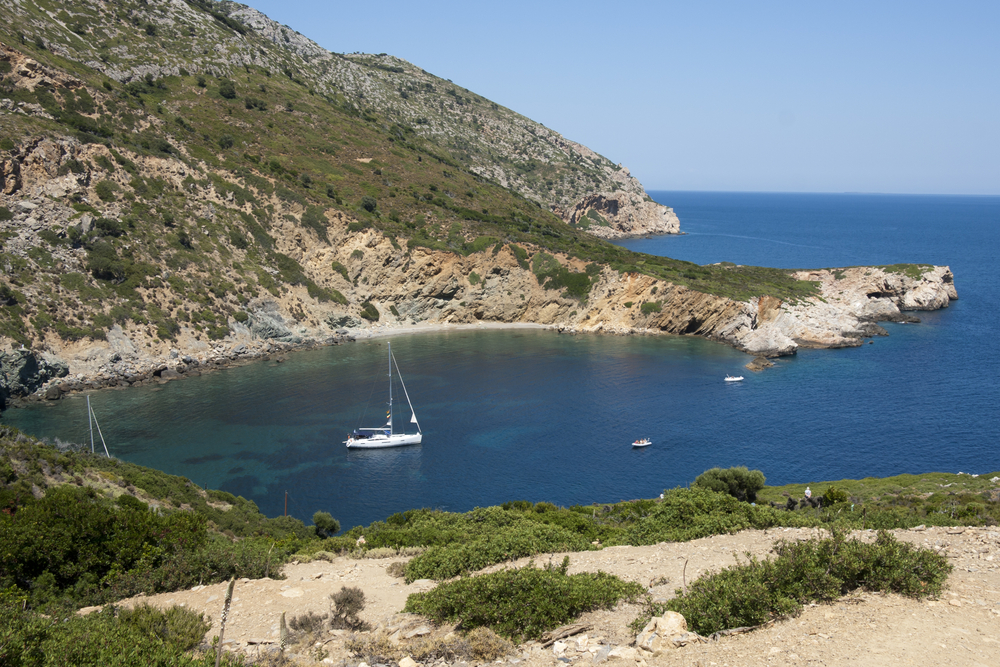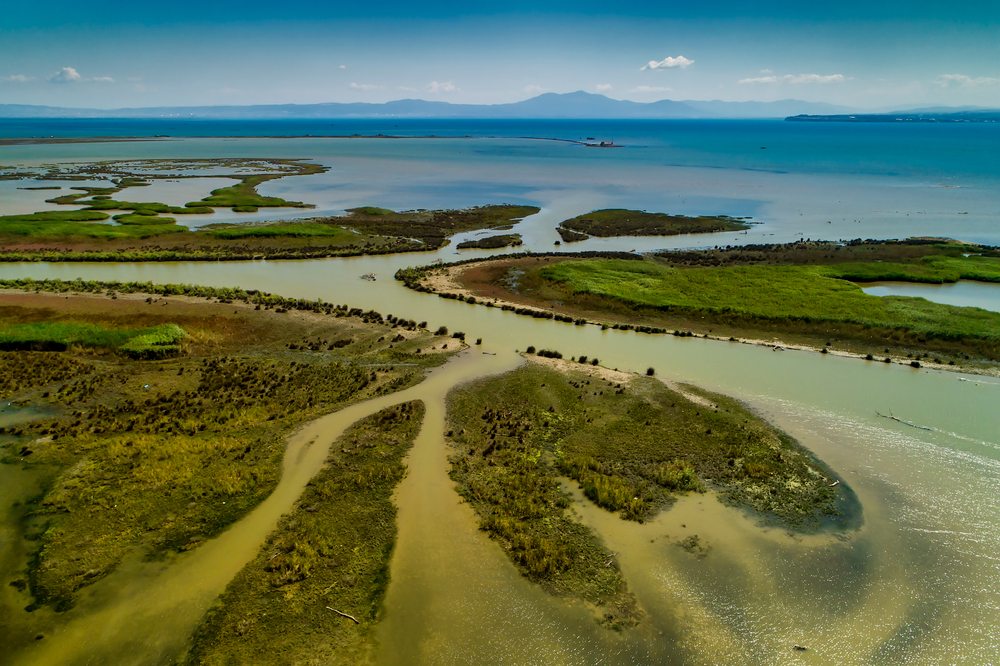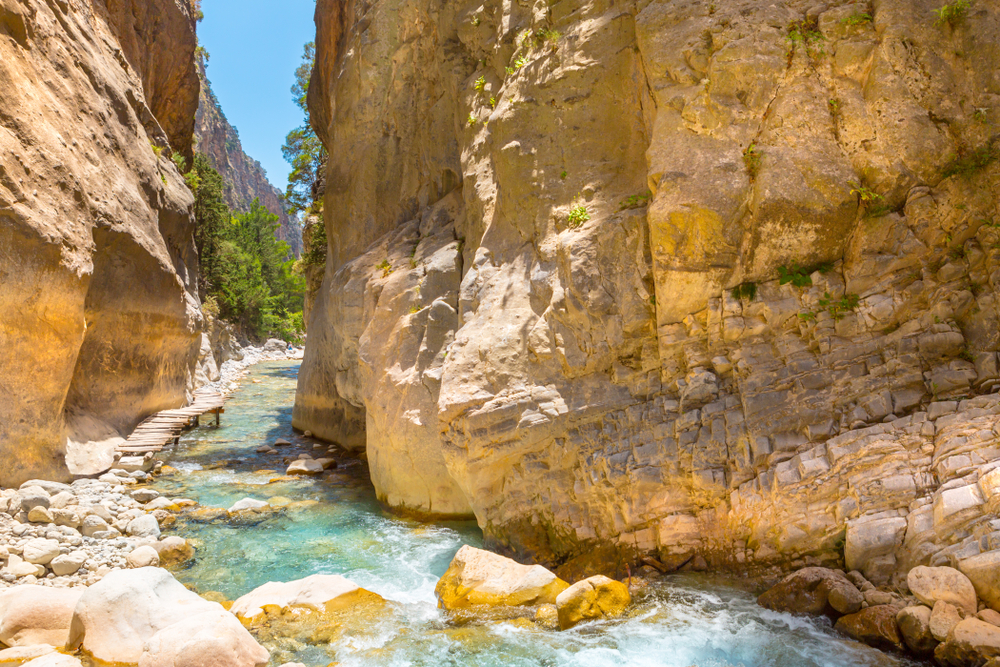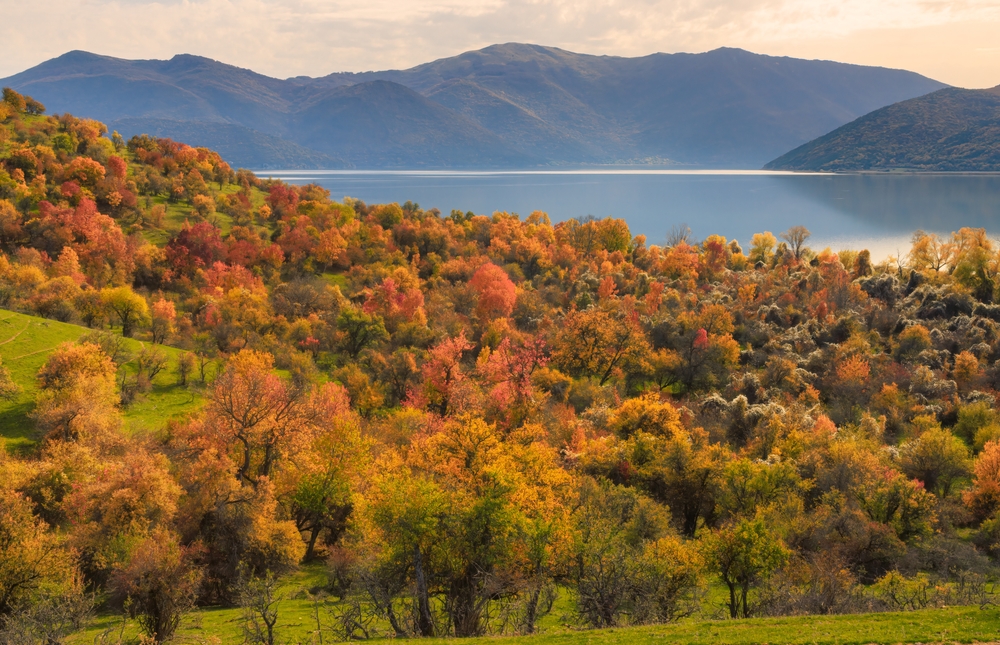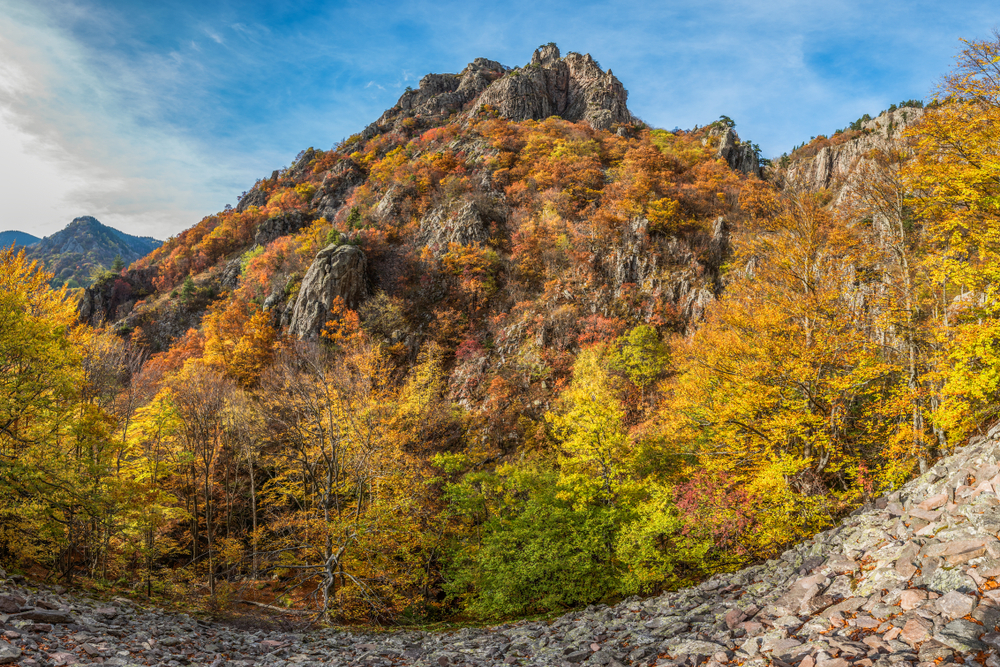Sounio Overview
Sounio National Park, known locally as Εθνικός Δρυμός Σουνίου, is a coastal protected area in southeastern Greece, spanning approximately 13.5 square miles (35 square kilometers).
Located in the Attica region, it sits at the southernmost tip of the Attic Peninsula, encompassing the famed Cape Sounion and its surrounding landscapes. The park is best known for its dramatic cliffs that rise above the Aegean Sea, offering stunning panoramic views, particularly at sunset.
It is also home to the iconic Temple of Poseidon, an ancient Greek ruin dating back to the 5th century BCE, which stands atop a rocky promontory and has long been a symbol of maritime power and reverence to the sea god.
The park’s terrain is characterized by rocky outcrops, steep cliffs, and rolling hills covered in Mediterranean vegetation. Visitors will find dense maquis shrubs, including kermes oak, wild olive trees, and lentisk bushes. The dry, arid landscape is punctuated by pockets of Aleppo pines and hardy, salt-tolerant flora that thrive in the coastal environment.
The rugged coastline, with its hidden coves and sea caves, provides a stunning contrast to the deep blue waters of the Aegean. Inland, old mining tunnels and remnants of ancient silver mines reveal the area’s historical significance, as it once played a vital role in financing Athens’ naval fleet during the classical period.
Sounio National Park supports a variety of wildlife, despite its relatively small size. Among the notable mammals are red foxes, hedgehogs, and hares, which navigate the rocky hills and dense vegetation.
Birdwatchers will find an array of avian species, including kestrels, peregrine falcons, and Eurasian eagle-owls, which make their nests in the cliffs and rocky outcrops. Along the coast, seagulls and cormorants are commonly spotted, while migratory birds use the park as a resting point. Reptiles such as the Balkan green lizard and the Greek tortoise can also be seen basking in the sun on the park’s warm rocks.
One of the park’s most famous features is the Temple of Poseidon, a well-preserved archaeological site that draws thousands of visitors each year. Its towering Doric columns, partially intact, create a striking silhouette against the sky and offer a glimpse into ancient Greek civilization.
The site’s historical significance and breathtaking location make it one of Greece’s most visited landmarks. Additionally, the park’s network of trails leads visitors through scenic landscapes, providing opportunities for hiking and exploring the remnants of ancient mines and fortifications. The surrounding beaches, such as Legrena and KAPE Beach, offer spots for swimming and relaxation.
Visitors can experience the park in multiple ways, including guided tours that provide historical context to the ruins and mines, as well as hiking routes that traverse the rugged terrain.
Many choose to visit in the late afternoon to witness the sunset over the Aegean from the Temple of Poseidon, a sight that has captivated travelers for centuries. The park’s coastal location also allows for activities such as snorkeling and kayaking in its nearby coves.
While Sounio National Park remains a well-preserved area, it faces conservation challenges such as erosion, tourism pressure, and habitat loss due to urban expansion. Measures have been taken to protect the archaeological and natural heritage, including strict regulations on construction and conservation programs to maintain the integrity of its landscapes.
Overall, the park represents a harmonious blend of history and nature, offering a unique and unforgettable experience.











































































